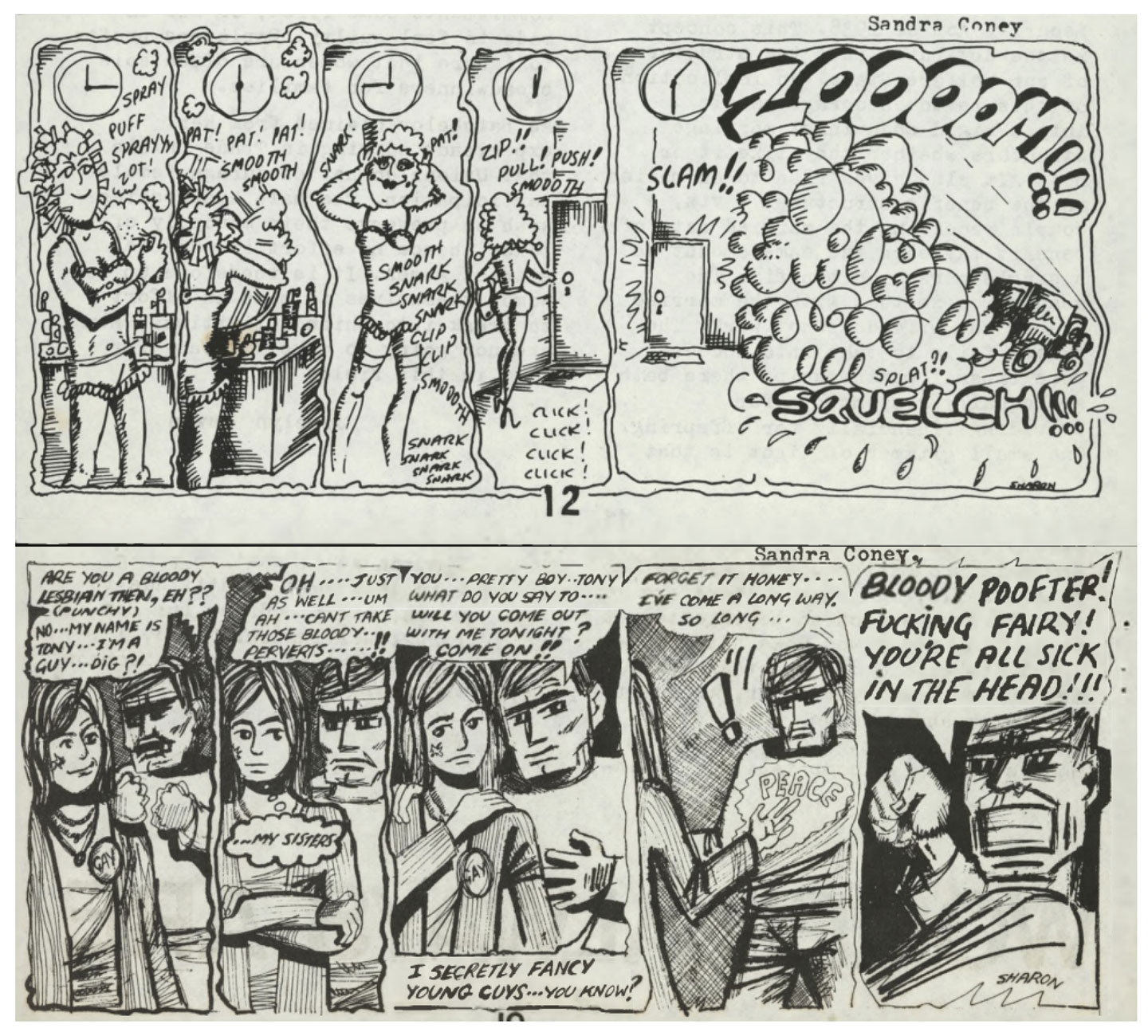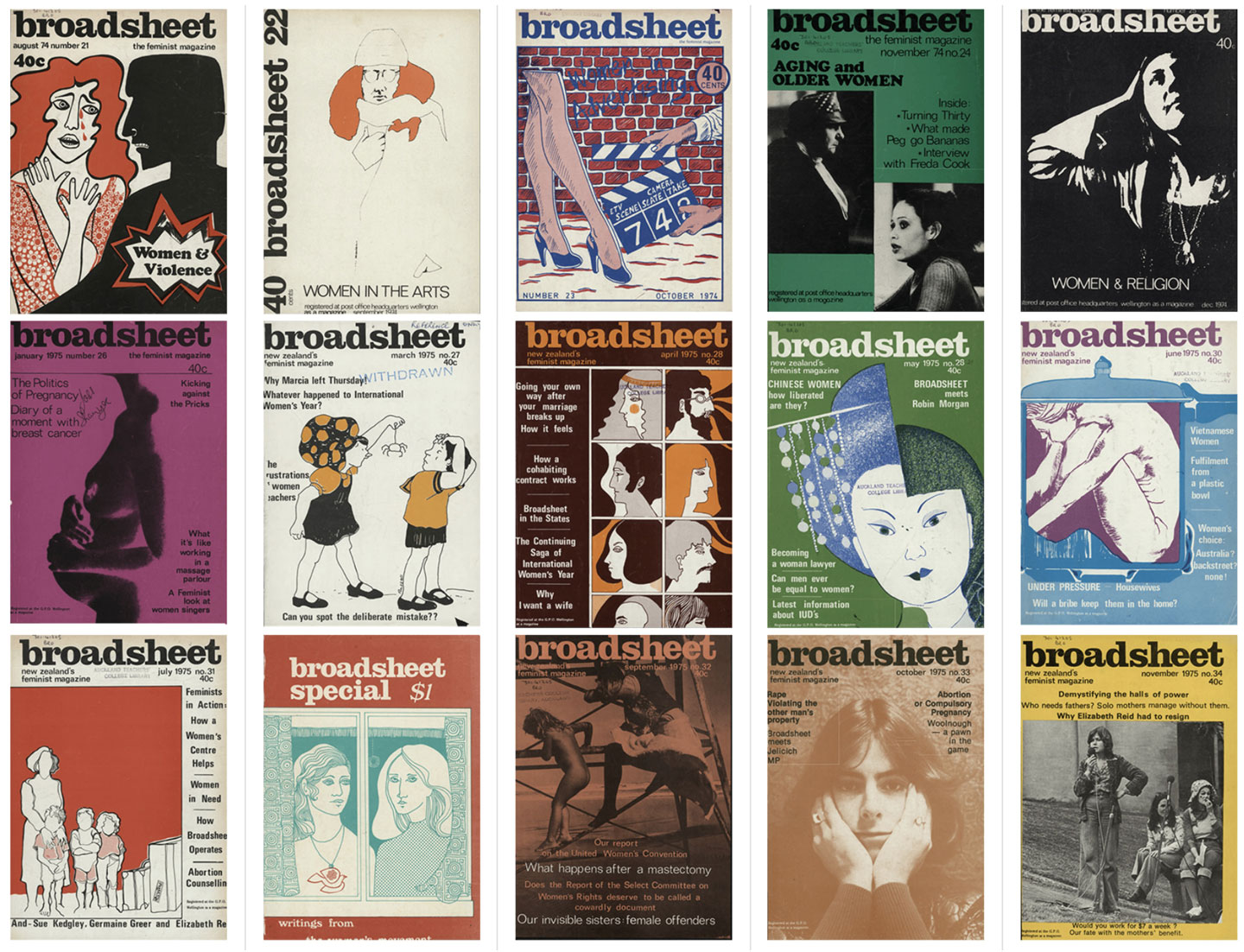Broadsheet, New Zealand’s Feminist Magazine Goes Digital
Written by Lana Lopesi
Graphic Matters is a monthly column on issues and ideas related to New Zealand Design Culture
 Covers of Broadsheet Issues 1 – 15
Covers of Broadsheet Issues 1 – 15
“…I became pregnant because I wanted to have a baby; my motives or reasons are no one’s business but my own…”
— Anonymous, Broadsheet Issue 1
On January 19, just as we were all wiping the sleep from our eyes post our Christmas and New Year’s celebrations, Jacinda Ardern the Prime Minister of Aotearoa New Zealand announced her pregnancy. Our Prime Minister, is going to be pregnant and then a mother while in office. What a statement for women the world over.
Of course, Ardern’s entry into parliament and now pregnancy sits in what has been a year of hope for women worldwide. The so called “Year of the Woman”, saw Hillary Clinton make history as the first female major-party nominee for American president (and even though the majority of American voters elected a woman to the White House, the electoral college — a convoluted institution created by men — gave the presidency to a man with 2.8 million fewer votes). In response to that, women (and the men who support them) filled the streets, plazas and squares of Washington and other cities across America and the world, for the Women’s March. And of course, the Weinsteins, Cosbys and other sexual predators of the world are being toppled one by one through the #MeToo movement.
In the context of a landmark year for women, Broadsheet New Zealand’s feminist Magazine published from 1972 until 1997 went digital. The digitisation of Broadsheet is a part of The University of Auckland Library’s digitation strategy which aims “to create digital collections of high research and academic value to support learning and research.”
Broadsheet is said to have been the “leading voice of the local women’s movement”, and was published by the Auckland-based Broadsheet Collective. Topics covered were “politics, class, sexuality, abortion, the arts and Māori sovereignty.” Distributed nationally, Broadsheet was published 10 times a year until spring 1991 when it became a quarterly. Its editorial content ranged from news, features and reviews, columns, letters and event notices to poetry, short stories and cartoons. Some well-known artists were among the women who contributed illustrations and photographs.
Broadsheet as a design object is too, very much a national treasure. For the first two years, the typing, writing and layout was done by a group of volunteers from the Auckland Women’s Liberation. They were single colour, with cover illustrations some of which are credited to Sharon Aleston, Barbara Stanish and Marliyn Webb among others. The illustrations employed satire and humour as well as pulling on visual tropes of dissent, such as the raised fist.
 Cartoons from the ‘Kicking against the Pricks’ section
Cartoons from the ‘Kicking against the Pricks’ section
From mid-1974, a noticeable design change occurred as the magazine moved from being an underground rag to stocked on the “magazine racks of stationers and bookshops.” Helen Courtney who was one of the 8 – 10 designers that Broadsheet had over it’s 25 years told Design Assembly:
“In terms of design this was always constrained by lack of money, however in 1974 the decision was made to distribute it to bookshops – the magazine was resized and “more professional methods of layout and printing” used to appeal to a wider readership.
Diane Quin, who admired the look of magazines like Vanity Fair and The Face, updated the masthead (1984). And in 1987 Sharon Alston oversaw a revamp to a glossy magazine with a 4-colour cover. Again, the motivation was to have a high-quality magazine that could attract a wide readership. Unfortunately this was an expense that couldn’t be maintained and in 1990 it reverted to 2-colour gloss cover and newsprint inside.
When I designed Broadsheet (1990/91) my first thing was to do the layout on computer. Before 1990 the layout/paste up had been manual labour all the way, measurements, calculations, letraset and wax – really, really tedious. And very stressful for the designer who often pulled an all-nighter close to deadline.
The guys at Paradigm (which did the electronic pagination) were hugely supportive They bought QuarkXPress into NZ and taught me the rudiments of that. So, there I was with my Mac Plus computer sporting 1mb RAM and putting 800k floppy disks in and out of the slots thinking it was fantastic! Which it was.
Feminists were concerned about the negative way they were often stereotyped by other media and Broadsheet wanted to counteract that. Ironically while the technological revolution moved at pace, the Women’s revolution has barely started.”
While there is no doubt that the magazine was influential in adding to social and political conversations at the time, reading it in retrospect it is also an incredibly valuable resource to understanding second-wave feminism of that era. And a wakeup call to how far we have come and how much further we have to go. While Ardern’s pregnancy is an amazing example of equal employment opportunities and how to move beyond traditional gender roles, reading the line “…I became pregnant because I wanted to have a baby; my motives or reasons are no one’s business but my own…” from the very first issue of Broadsheet from 1972, took me back to the dominant news story of last year, our national concern for Arderns’s womb. The second issue’s editorial discussed equal pay, another conversation — that while the context is different and arguably much better for women — featured prominently in the media in 2017.
And while Anne Else, Founding Editor, of Broadsheet agrees commenting, “…it’s appalling to see how relevant much of it still is, with so much of what we fought against still having to be dealt with by today’s fantastic young feminists.” She also provides hope “As one of the groups of women who started Broadsheet in 1972, I couldn’t then have imagined how important it would be for the feminist movement then just getting underway. For thousands of women readers, it made sense of what was happening to them and helped them change their lives and their country for the better. I can honestly say that feminism saved my life, and both writing for and reading Broadsheet was a vital part of that.”
So, while even in the “Year of Woman” we are acknowledging that there is a long way to go, this year feels more positive than last, if for no other reason than that this national treasure, our first feminist magazine is now online and accessible to all. A landmark in the generation of a feminist visual identity in Aotearoa New Zealand yet to be rivalled.
 Covers of Broadsheet Issues 21 – 34
Covers of Broadsheet Issues 21 – 34



